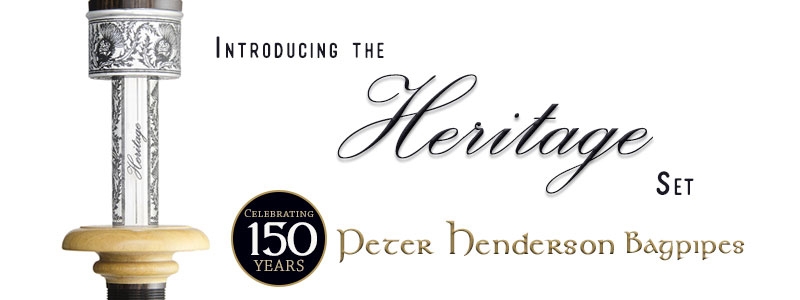Robert Wallace: The following is a quick guide to some important aspects of bagpipe maintenance and set-up and how you should look when playing.
1 Try not to puff out your cheeks when blowing and keep the blowstick in the centre of the mouth. Learn to grip it with your lips, not your teeth. Your dentist might not get that new car he wants, but you’ll be spared a lot of time under his whining drill.
2 Be natural in your stance. Don’t lean to the left or right, or stare at the sky or glower at the pavement. Look straight ahead, proud of your instrument and of the fact that you are playing the greatest instrument in the world. To this end make sure the blowstick is the correct length and that the bag is not too big for you (a common fault). Make sure the drones are evenly spaced – your handbreadth between each. Make sure you have a nice angle on the blowstick too, so that it sits perfectly between the lips without you having to hold on to it. Work at your appearance and deportment by having a regular look at yourself in that wardrobe mirror.
3 Make sure your kilt, brogues, jacket, bonnet etc. are all neatly fitted and clean. If you look well, you will play well. If you are uncomfortable your mind will be distracted from the job in hand – delivering good music.
4 Learn how to set your reeds so that they take a minimum of air. Never play reeds that are too difficult for you – at least away from the band hall. If your pipe major insists on a hernia giver, then have a spare chanter and reed set up so that you can have a blow at home and thus continue your practice. If you ever feel reluctant to pick up your pipes for a tune then you know things are not right. The instrument itself must never become a discouragement to playing, so make every effort to get it as comfortable as possible – and that means an airtight bag, airtight joints, and reeds you can sound without choking.

5 Check the blowstick valve too. I do not recommend valves which restrict air flow in any way. If you have to force air past it then there is something amiss. Get one that does the job without restriction. It should fit over the bore of the blowstick NOT inside it. If in doubt, the old leather clack works well but make sure the hinge is to the top so that it lies closed and not open.
6 If you play synthetic drone reeds, as most people do these days, be aware that not all work in all drones. A leading make are Eezidrones made by Pipe Dreams and I recommend them – however they may not suit all instruments and all pipers and bands. Synthetic reeds are expensive too, so trial and error is the key. If you are in a band, try to borrow a set of different make from a colleague to see if they work in your pipes. Avoid at all cost those reeds that make your pipes buzz like a vacuum cleaner (and there are plenty on the market). The closer the sound to that of natural cane the better.[wds id=”3″]
7 Adjust the tuning pins and bridles on the reeds so that your tenor drones tune just on the hemp or slightly above. Too low and the reed is set flat and must be adjusted. The bass mid joint should tune about three centimetres or an inch and a half above the projecting mount and the top joint on the hemp or above.
8 When buying a bagpipe don’t pitch things too highly at first. Start with a humble set and as you progress you can upgrade to the more elaborate models. Most manufacturers these days have the same wood and the same processes for the cheaper sets as they do for the more expensive, the only difference the ornamentation.
If offered a second-hand set be very careful. You may be buying someone else’s trouble. Give them a thorough going-over before parting with your hard-earned. That said you may strike it lucky and get a top grade instrument for a good price, in which case go for it. A second-hand set which has a proven pedigree – played at the highest level in Grade 1 bands or professionally with success – will most probably be worth buying.
The above is a rough guide to getting your instrument into shape and how you should look when playing it. Stay tuned to PP Academy for more detailed advice in future bulletins.


















